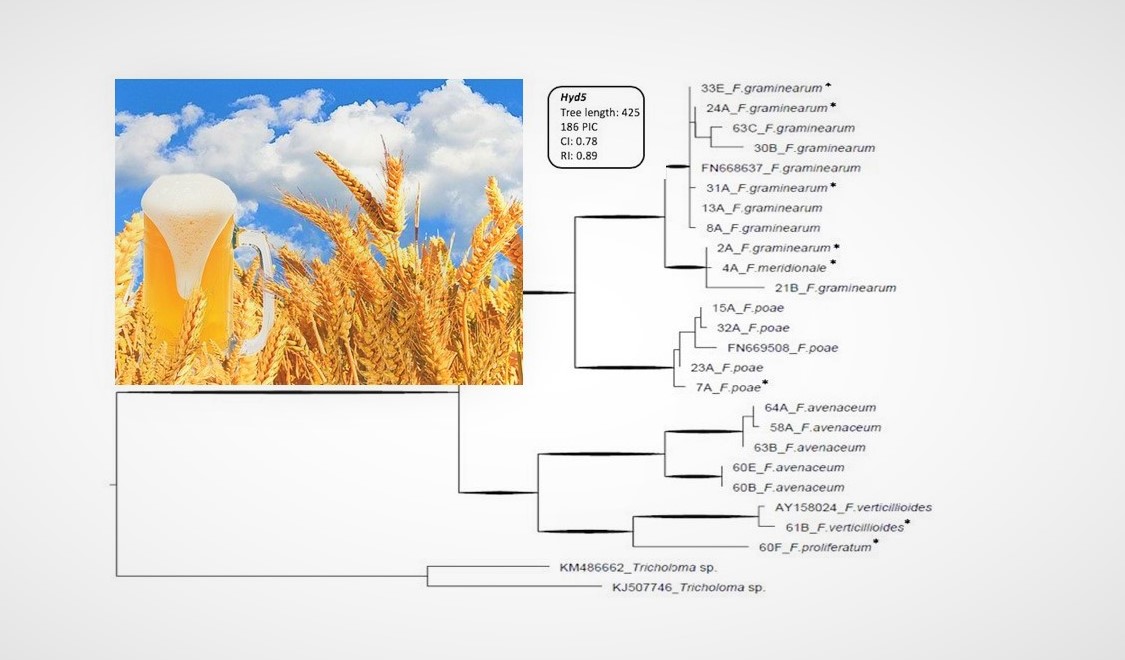Gushing phenomenon and gene Hyd5 from Fusarium species in barley samples from Brazil
DOI:
https://doi.org/10.18832/kp2021.67.435Keywords:
barley, beer, gushing, quality, Hyd5Abstract
Hydrophobins produced by the Fusarium genus in brewing barley in connection with gushing phenomenon have been studied in many different countries. However, the presence of proteins associated with gushing in grains harvested in Brazil is currently unknown. The surface active class 2 hydrophobin Hyd5 has been identified as a possible causative agent for gushing of beer. For this reason, the objective of this study was to evaluate the presence of Hyd5 in isolated Fusarium strains from Brazilian barley samples. This was followed by gushing tests. The Hyd5 gene was identified in all fungal isolates and phylogenetic analysis exhibited four main linages. Gushing tests demonstrated that among the 21 analysed malt samples 8 were positive considering overfoaming at the bottle opening. Levels ranged from 8 to 124 g/bottle of gushing. No correlation between phylogenetic analysis and gushing was observed when they were evaluated together. This is due to positive isolates for gushing which are scattered throughout the phylogenetic tree. The other cause may be that all main clades contain at least one positive isolate for gushing. More research regarding hydrophobins and gushing should be carried out in the future due to the fungi isolated in Brazilian samples. These results offer excellent support that could help the brewing industry to prevent its losses and to provide further understanding of the gushing phenomenon in beer.

Downloads
Published
How to Cite
Issue
Section
License
Copyright (c) 2021 Karim C. Piacentini, Sylvie Běláková, Liliana O. Rocha, Geovana D. Savi, Karolína Benešová, Marek Pernica, Ivo Hartman, Josef Čáslavský, Rastislav Boško, Benedito Correa

This work is licensed under a Creative Commons Attribution 4.0 International License.







